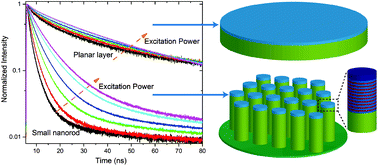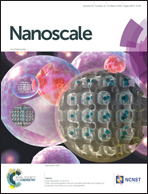Free charges versus excitons: photoluminescence investigation of InGaN/GaN multiple quantum well nanorods and their planar counterparts†
Abstract
InGaN/GaN multiple quantum well (MQW) nanorods have demonstrated significantly improved optical and electronic properties compared to their planar counterparts. However, the exact nature of the processes whereby nanorod structures impact the optical properties of quantum wells is not well understood, even though a variety of mechanisms have been proposed. We performed nanoscale spatially resolved, steady-state, and time-resolved photoluminescence (PL) experiments confirming that photoexcited electrons and holes are strongly bound by Coulomb interactions (i.e., excitons) in planar MQWs due to the large exciton binding energy in InGaN quantum wells. In contrast, free electron–hole recombination becomes the dominant mechanism in nanorods, which is ascribed to efficient exciton dissociation. The nanorod sidewall provides an effective pathway for exciton dissociation that significantly improves the optical performance of InGaN/GaN MQWs. We also confirm that surface treatment of nanorod sidewalls has an impact on exciton dissociation. Our results provide new insights into excitonic and charge carrier dynamics of quantum confined materials as well as the influence of surface states.



 Please wait while we load your content...
Please wait while we load your content...